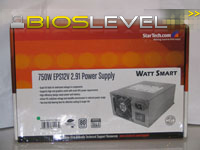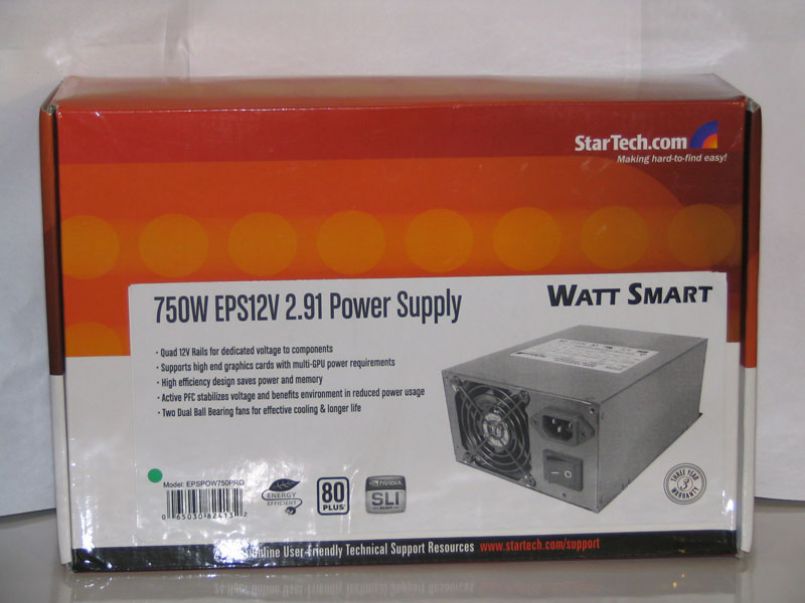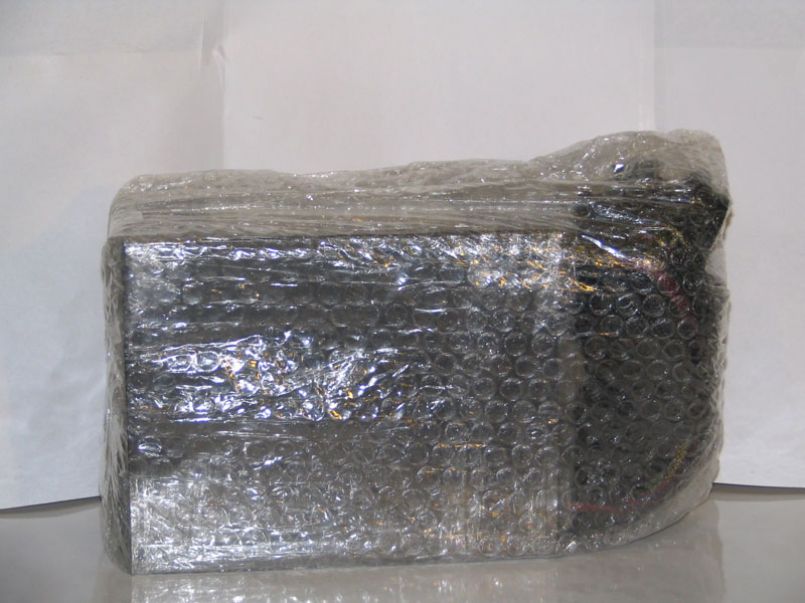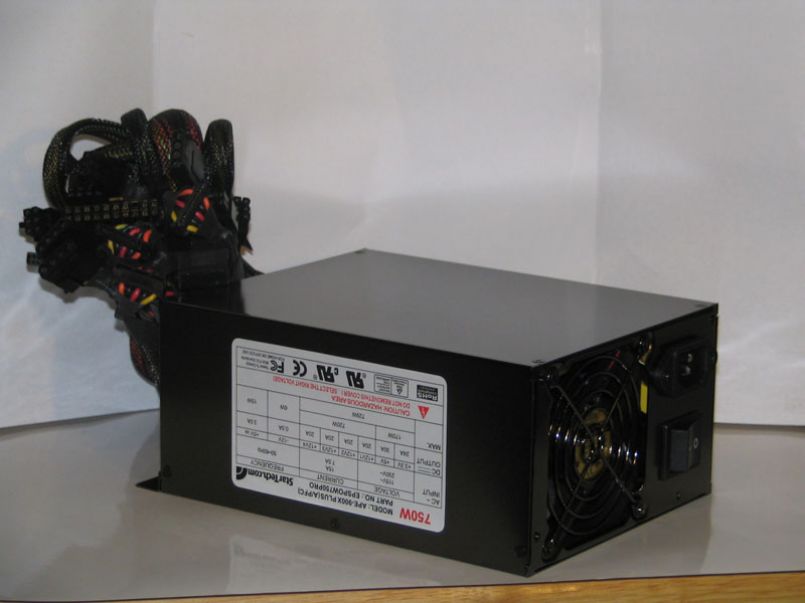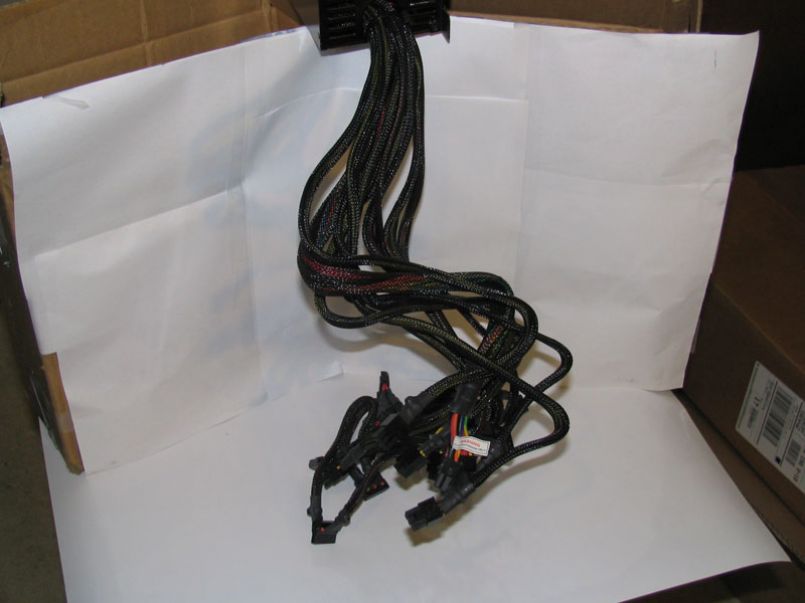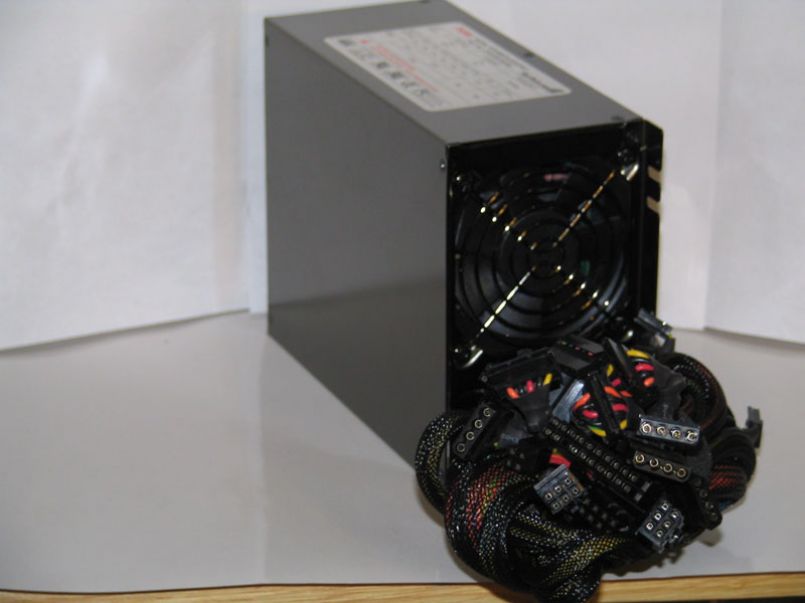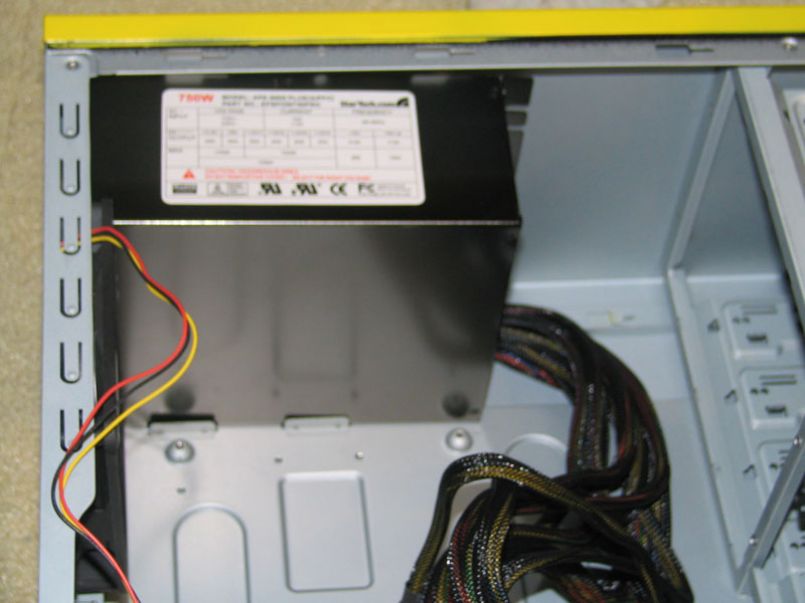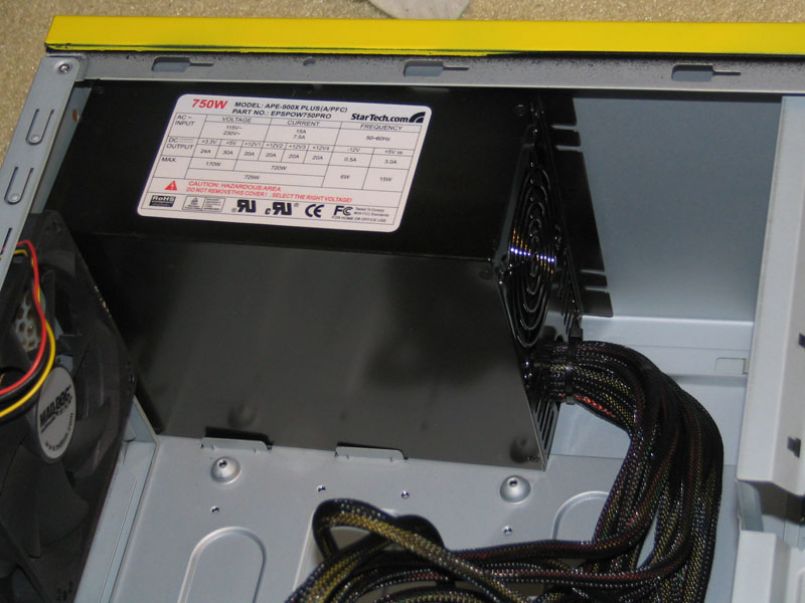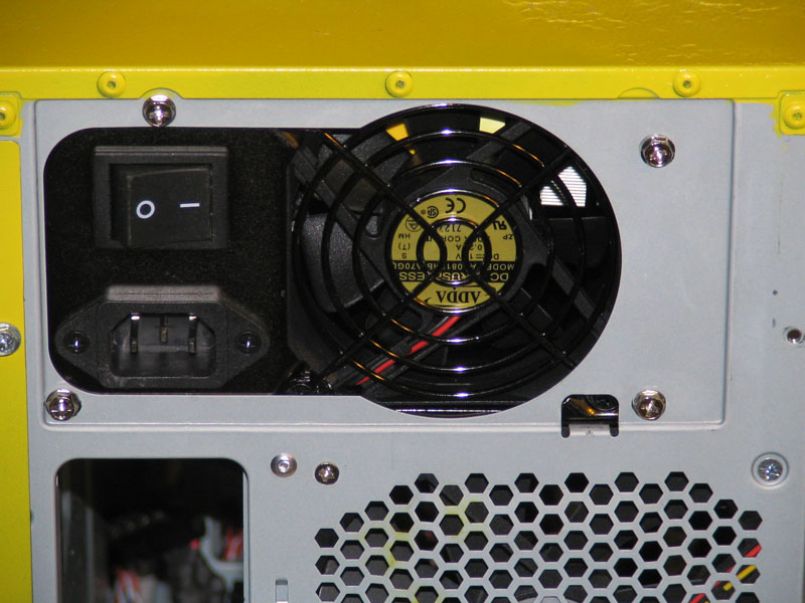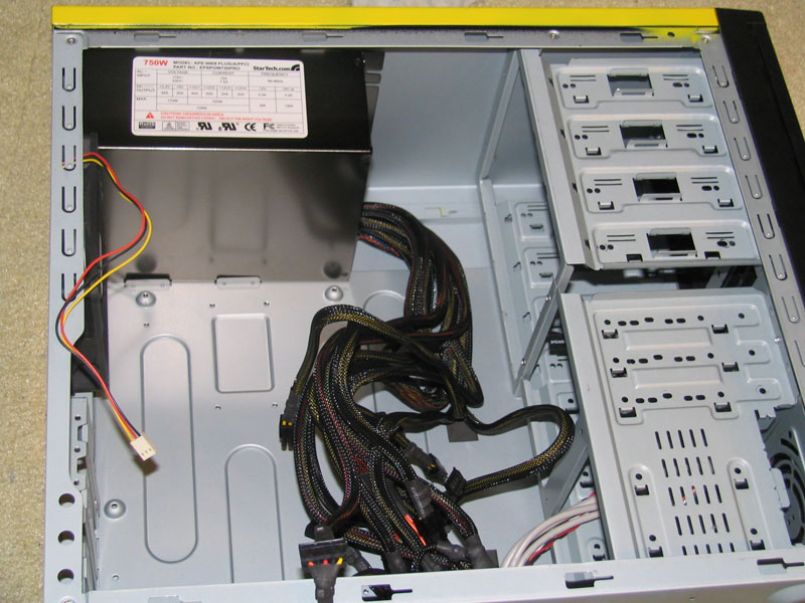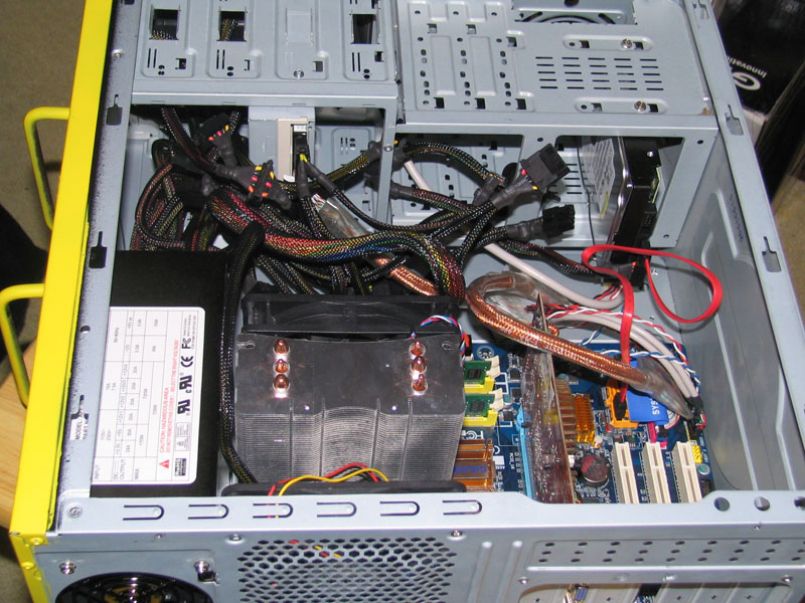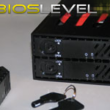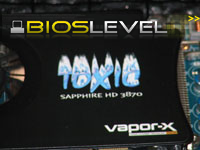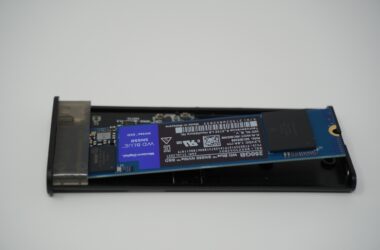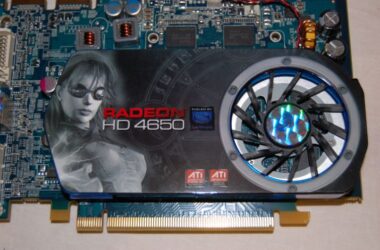Introduction
StarTech.com is a company specializing in hard-to-find connectivity and technology parts, which it manufactures. StarTech.com recently sent us a WattSmart 750W EPS12V 80 PLUS Power Supply (EPSPOW750PRO) for review, and we were impressed by the quality and features present in this model: quad 12v rails, high energy efficiency, dual ball-bearing fans, and more connectors than we’d ever need.
The 80 PLUS program is a unique forum made up of electric utilities, the computer industry, and consumers. The organization’s goal is to bring power-efficient power supplies to both desktops and servers. For a power supply to qualify for this certification, it must be able to achieve 80% or greater energy efficient at 20%, 50% and 100% of rated load with a true power factor of 0.9 or greater. The efficiency is calculated by dividing the power drawn from the wall (AC) by the power the power supply outputs (DC). For every 100W of AC power used, the power supply must output atleast 80W of DC power.
Packaging & Appearance
One of the things I like the most about StarTech.com’s packaging is that it’s different than most other companies you tend to run into. Instead of your typical, small cardboard box, StarTech.com packaged the power supply in a glossy box covered in the StarTech.com color scheme. A sticker on the top of the packaging shows a picture of the power supply, the name, and some of the awesome features.
The box opened up to reveal a bubble-wrapped power supply and a spare power cord. Removing the bubble wrap, I found an attractive, dark-gray-colored power supply, and several cables fully sleeved in black nylon.
The power supply itself measures 7.5 inches in length, and approximately 3.5 inches in height, while the power cables reach about 16 inches. With 16 inches of cable, there shouldn’t be anything in even a full tower case that this power supply can’t reach.
Also featured on the EPSPOW750PRO are two dual ball-bearing fans, engineered for longer life and quiet usage. One is located on the rear of the unit, while the other resides on the front. Unlike many current power supplies, there is no fan on the underside.
The EPSPOW750PRO isn’t a modular power supply, nor is it small by any means. With the long 16 inch cables, this power supply isn’t going to leave much airflow in smaller cases. However, with four 12v rails, the EPSPOW750PRO is ideal for server or advanced desktop usage. Let’s take a look at the unit’s features and specifications on the next page.
Features & Specifications
The EPSPOW750PRO achieves 80% energy efficiency or greater at 20%, 50%, and 100% load. This is primarily due to the Active Power Factory Correction, which improves voltage stability. Despite being a powerful unit, it provides environmentally friendly power usage. The unit meets the 80PLUS certification standard for higher efficiency power supplies. 80% efficiency refers to the feature that 80% of the power the unit draws from the power grid is turned into usable power. Or in mathematical terms, DC Watts divided by AC Watts.
As we mentioned previously, the EPSPOW750PRO has Quad 12v rails, providing dedicated voltage outputs. The unit has a total of four 6-pin PCI-Express power connectors, but this isn’t necessarily meant to power a Quad-SLI system. These are provided so no single rail overdraws on power. The EPSPOW750PRO is, however, fully SLI capable.
The EPSPOW750PRO’s enclosure is nickel-plated, giving it an anti-corrosive shell for all those dangerous lab experiments we’re sure our readers put their rigs through. And as we mentioned earlier, the cables are sleeved in a nylon mesh for better neatness and airflow.
To get a better idea of unit’s features, here’s a list of the technical specifications:
| Item | Details |
| Connectors | 1x 20/24 pin ATX 1x 8-pin EPS Power Connector 4x 6-pin PCI-Express Power Connector 1x 4-pin ATX P4 Power Female Connector 6x SATA Power Connector 6x 4-pin Molex Connector 2x Floppy Connector |
| Efficiency Rating | >80% at full load |
| EMI/RFI | Built-in EMI filter and low ripple noise |
| Fans | 2x Dual ball bearing |
| Product Height | 3.39 inches (86mm) |
| Product Length | 7.48 inches (190mm) |
| Input Current | 15A @ 115V / 7.5A @ 230V |
| Input Voltage Frequency | 50~60Hz |
| MTBF | 100,000 hours @ 25°C |
| Operating Temperature | 0~30 degrees C @ Full load 40 degrees C @ 90% load 50 degrees C @ 80% load |
| Output Power | 850W |
| Power Factor Correction | Active |
| Catron Quantity | 6 |
| Storage Temperature | -20 degrees to 80 degrees C |
| Peak Output | 930W |
Now that I’ve covered the important features and technical specifications of the unit, it’s time to put this behemoth in to a case and wire it up to to our test system.
Installation
Initially, I attempted to install the EPSPOW750PRO in my Thermaltake Armor Jr. case, but it proved impractical. Without removing both the CPU heatsink and all of my 5.25″ drives, the power supply simply wasn’t going to fit. Instead, I opted for an empty case to which I could transfer other components.
The power supply mounted to the rear of the case without an issue. There’s also an extra slots near the front of the power supply (where the cables come out) that give you the ability to secure the power supply against the top of the case. This wasn’t a big issue with me, so I let them be.
Even with a reasonably-sized mid-tower, the
power cables are much longer than the case. Once all the components are installed, I’m going to tuck the extra cables away in the empty 5.25″ drive bays, out of sight.
The various connectors worked without an issue. I found the 20/24-pin motherboard connector a little odd, as it’s actually two separate pieces. Otherwise, the inside of the case looked fairly clean after everything was installed.
Next, let’s look at the power supply’s performance.
Usage & Performance
While the power requirements for components such as video cards continue to skyrocket, most other components’ power requirements as decreasing. Between SATA hard drives and DDR2 RAM, I’m beginning to think I wouldn’t be able to draw a full 750 watts of power from this power supply.
Just to be sure I got a good draw on the machine, I moved my 8800GTX video card, two additional hard drives, three Vantec Tornado case fans, and about eight cold cathodes to the vicinity of this case and hooked them all up. This brought the grand total of hardware to a Core2 Duo E6300, 2GB of Crucial Ballistix Tracer DDR2 RAM, a GeForce 8800GTX, five SATA2 hard drives, six cold cathodes, and 7 case fans.
I made sure none of the fans in the case were thermally controlled, then started a game of Unreal Tournament 3 on high settings to get the full usage out of both the video card, RAM, and processor. Below, you can find my results from testing:
| Input | Output |
| +12v (Rail 1) | 20 A (240W) |
| +12v (Rail 2) | 14 A (168W) |
| +12v (Rail 3) | 10 A (120W) |
| +12v (Rail 4) | 12 A (151W) |
| -12v | .5 A (6W) |
| +3.3V | 3 A (20W) |
| +5 VSB | 3 A (15W) |
| DC Power: | 720W |
| AC Power: | 900W |
| Efficiency (DC/AC): | 80% |
To measure AC wattage, I used a Kill-a-Watt, purchasable from ThinkGeek. These devices are relatively inexpensive, but a giant help in measuring your equipment’s power usage. To measure the wattage, amp, and current on the separate rails, I used a voltammeter. I have a rather simple voltammeter that I can only check on the current and voltage. This isn’t a problem, because the wattage of a line can be found in the simple equation, Amps * Volts = Watts.
Dual-ball bearing fans are designed for longer lives and energy efficiency. The two 80mm fans on the Startech.com EPSPOW750PRO no doubt add to the unit’s power efficiency, but they are not the quietest of fans. For desktop use, the noise may go unnoticed, but this isn’t a power supply meant for home theater machines. Thankfully, even as the power usage increases, the fans do not seem to get any louder.
Unreal Tournament 3 doesn’t draw a full 99-to-100% pull on the CPU usage, so I decided to take things one step further and benchmark the system using OCCT.
Stress Testing
While it’s worth mentioning that BIOSLEVEL’s own Colin Dean contributed a translation to OCCT, we’re more interested in how OCCT kicks the CPU usage up to 100% and uses what onboard sensors it can find to benchmark the system. In my case, it found a temperature sensor for the Core2 Duo, and several voltage sensors on the motherboard including vCore, 3.3V, 5V, and 12V.
I configured OCCT to run this stress test for one hour. The status screen kept me updated as to where the voltages were. I didn’t see any concerning numbers, and everything seemed to be right on the dot. After the test was over, OCCT opens an Explorer window in the “My Pictures” folder, and voila, you have time charts of the voltages.
The first graph was the CPU’s VCore. Core2 Duo processors can handle .85 to 1.362V VCores. Despite the 12% ripple, these numbers are well within the operating parameters of the chip.
The system’s 3.3V feed was running a whopping 3.6% over what it should have been. This is very dismissable, and fantastic that we see no change in the voltage despite the CPU usage rising.
Again, we find a mere 2% difference in actual vs. required. The 5V feed runs at an almost constant 4.9V, never spiking to an extreme.
Finally, the main 12V feed. At approximately a constant 12.45V, the feed is only running about 3.6% over the required 12V. This is nothing serious, and should cause no damage to the motherboard or system performance.
Overall, the powersupply’s motherboard feeds look awesome. The best explanation to the rise in the VCore voltages is most likely the motherboard or CPU itself drawing in more power as more of the CPU is utilized. The EPSPOW750PRO holds its ground is solid voltages all around, even when the system is under strain.
Final Thoughts & Conclusion
While I personally don’t see a 750W power supply being a “hard-to-find” component, I’m nonetheless impressed by StarTech.com’s WattSmart 750W EPS12V 80 PLUS. We found the unit to provide quad 12v rails, high energy efficiency, dual ball-bearing fans, and more connectors than we’d ever need. There are three PCI-Express connectors, supporting up to three video cards in SLI or Crossfire configurations. Unfortunately, only one eight-pin connector is provided, so don’t expect to be able to run dual GeForce 9800GX2’s in this machine without a few adapters.
StarTech.com has brought us a very formidable power supply, and proven that you don’t have to sacrifice performance for performance to go green. The EPSPOW750PRO provided me with 80% power efficiency at a close to full load, which is an impressive feat. Not many enthusiast power supply manufacturers have come to this point yet.
The EPSPOW750PRO is mean for both desktop and server usage. Judging by the noise levels,
I can’t suggest the power supply for use in a home theater machine, but it is more than suitable for regular desktop use. I’d like to thank StarTech.com for sending us this unit for review, as it was an excellent unit for our first power supply review.
Pros
- 750W of Power
- Energy Efficient
- Long cables with plenty of connectors
- Dual ball-bearing fans
Cons
- Awkward to install in some cases
- Not the quietest power supply
Rating
9/10



